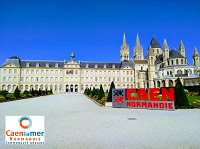Orateur
Description
A number of phenomena and signals from compact stars involve transport phenomena in nuclear matter at densities below saturation, where matter is known to be clusterized. This concerns core-collapse supernova dynamics at high temperature, where matter is in a liquid phase and the energy transport is ruled by the interaction of neutrinos with the different nuclear species, but also the magneto-thermal evolution of neutron stars through the presence of impurities in the crust.
In this talk we will review the two key aspects of the problem, namely (i) the theoretical prediction of the composition of the multi-component plasma matter in the different thermodynamic conditions; (ii) the effective treatment of in-medium modifications to the clusters energies in the dense stellar medium.
For this latter point, we will employ a relativistic mean-field formalism where light clusters are treated as independent quasi-particles with coupling constants calibrated on heavy-ion collisions measured by the INDRA-FAZIA collaboration. A full Bayesian inference estimation of the binding energy shifts without any prior assumption of the thermal parameters of the model will be presented, showing that light cluster abundancies are expected to decrease with temperature faster than previously estimated. The possible microscopic origin of the crustal resistivity from a disordered structure due to the presence of clusters will also be discussed.

